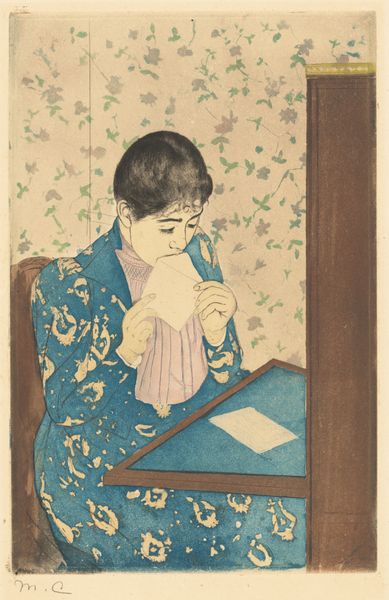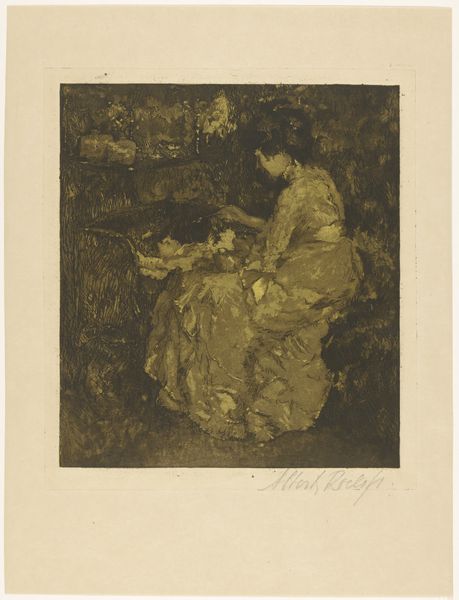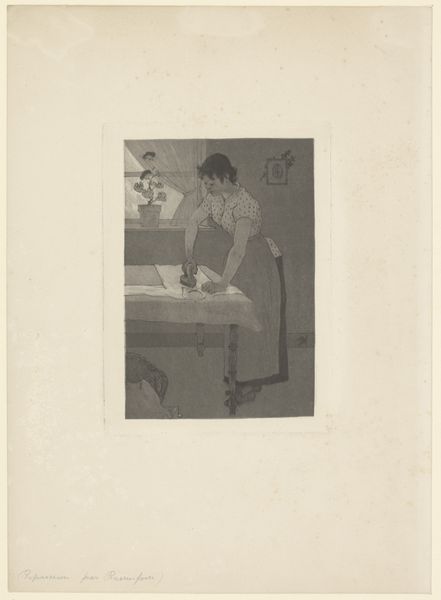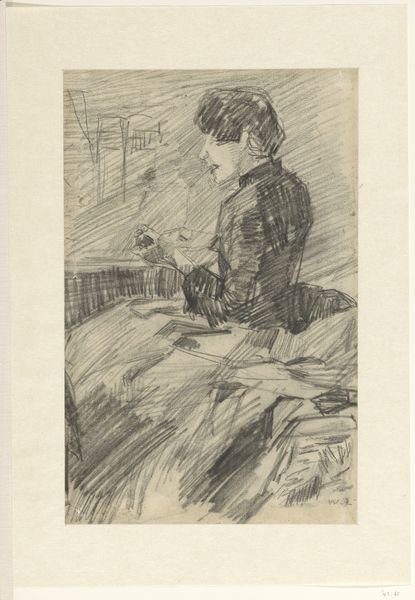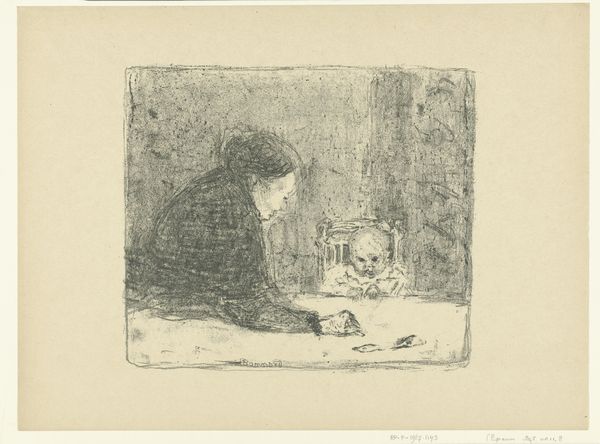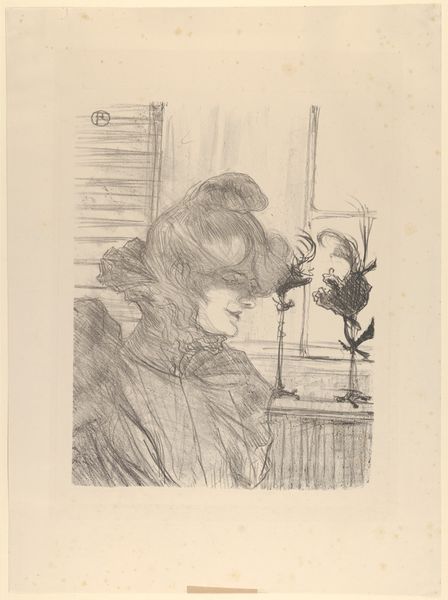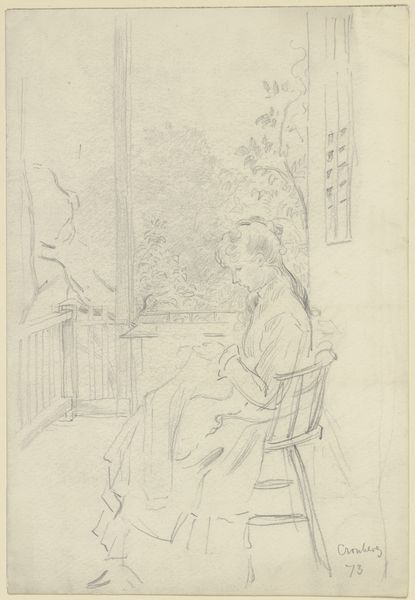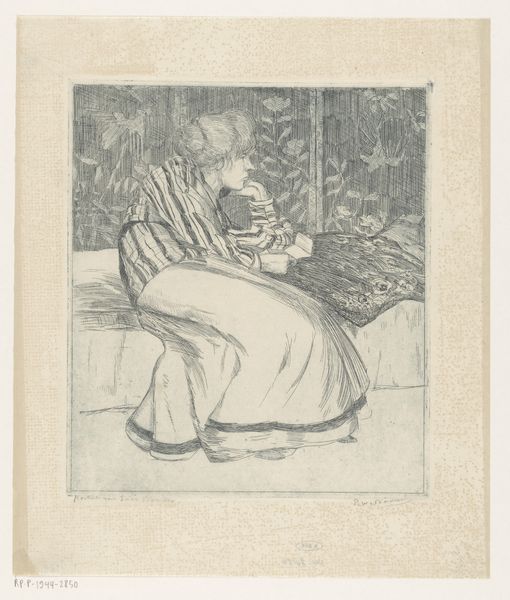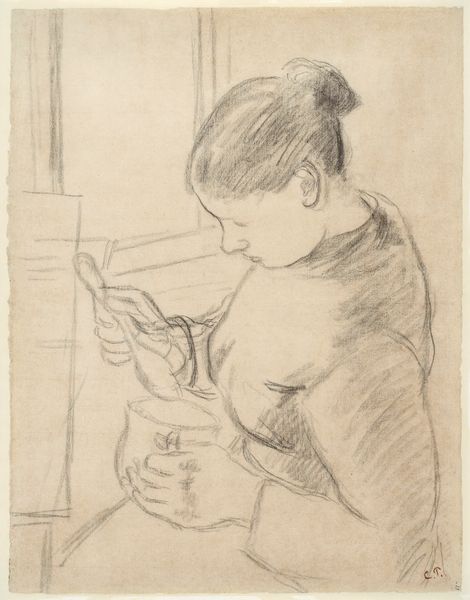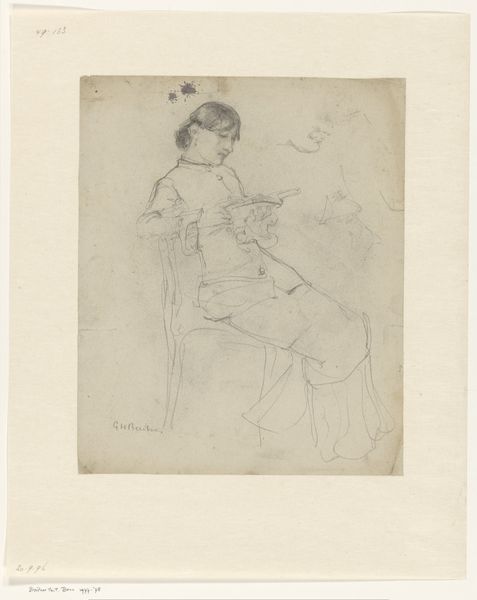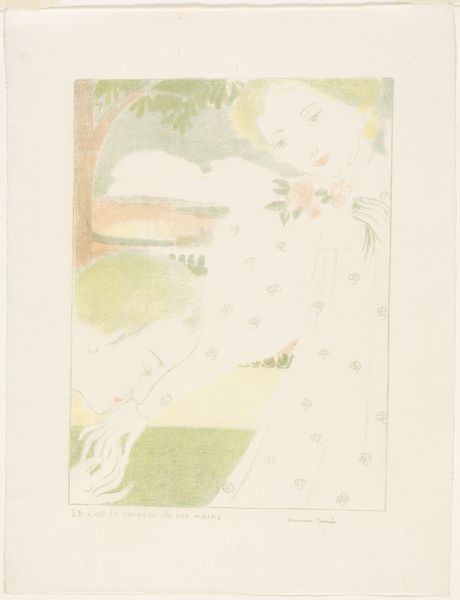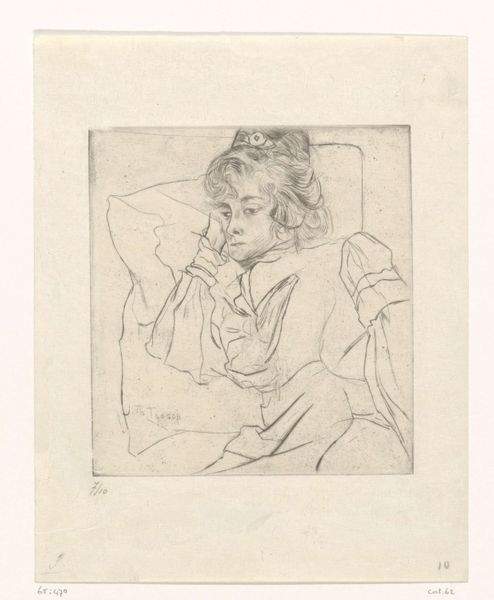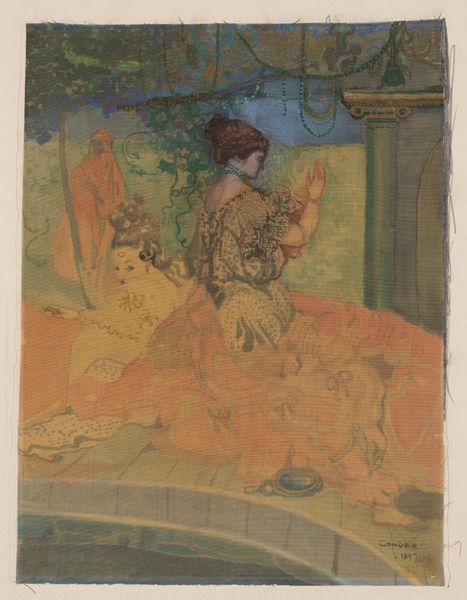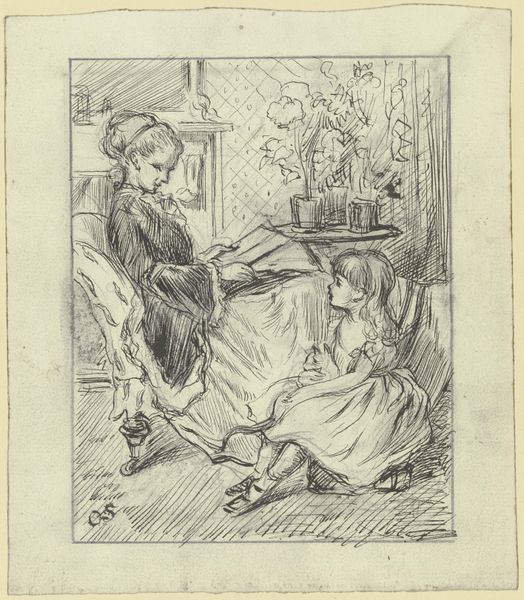
Dimensions: 9 3/4 x 7 7/16 in. (24.77 x 18.89 cm) (plate)13 5/8 x 10 13/16 in. (34.61 x 27.46 cm) (sheet)14 1/2 x 11 1/2 in. (36.83 x 29.21 cm) (mount)
Copyright: Public Domain
Curator: Eugène Delâtre's print, "In a Garden," created in 1893, invites us into a tranquil scene. It's currently held in the collection of the Minneapolis Institute of Art. Editor: My first impression is of a serene, almost melancholic intimacy. The soft blues and greens create a quiet, reflective mood, don't you think? The woman seems lost in her thoughts. Curator: Absolutely. Delâtre was deeply embedded in the artistic milieu of late 19th-century Paris. Prints like this played a key role in expanding art access to a broader public, challenging elitist art structures and norms of art production and reception. Editor: How fascinating. And considering the historical context, her act of mending, presumably clothing, seems charged with symbolic meaning. The act of visible mending rejects capitalist production methods and suggests self-reliance, resourcefulness, and defiance against the wasteful ethos of consumer society. Curator: Yes, the composition places her within a tradition of domestic imagery. In 1890s France, a growing middle class valued images of domestic comfort, solidifying notions of gendered labor. It mirrors the rise of advertising targeted to women who would presumably consume those images. Editor: In relation, this era produced feminist counter-narratives of women rejecting social norms, a theme very pertinent here. How does Delâtre approach women's identity outside patriarchal systems? Her downward gaze directs us from any direct interpersonal gaze and into internal introspection. Curator: While he was engaging with contemporary trends, it's tough to ignore that Delâtre does romanticize the everyday in a way that could be viewed as complicit in perpetuating societal expectations. But in any case, his use of Impressionistic techniques makes the commonplace utterly sublime. Editor: Precisely. His artistic method draws us into broader narratives, as you put it. Curator: Ultimately, it leaves me contemplating the enduring power of printmaking to reflect on and engage with our own evolving values. Editor: I completely agree. "In a Garden" speaks to the ways we create meaning from simplicity, while simultaneously interrogating societal norms through art and activism.
Comments
minneapolisinstituteofart about 2 years ago
⋮
Eugène Delâtre (1854–1938) played a fundamental role in the establishment of color etching at the end of the nineteenth century in France. He was trained by his father Auguste Delâtre, the premier printer of the Etching Renaissance. While Eugène began working in the black and white tradition, he created his first color plate in 1891 and In a Garden (1893) was the first color print he exhibited at the Salon. Similar to the color aquatints of American Mary Cassatt, In a Garden incorporates numerous artistic devices learned from Japanese prints, such as the emphasis on outline and silhouette and the choice of a pale color scheme. "In a Garden" was printed "au repérage," or with one plate for each color.
Join the conversation
Join millions of artists and users on Artera today and experience the ultimate creative platform.
